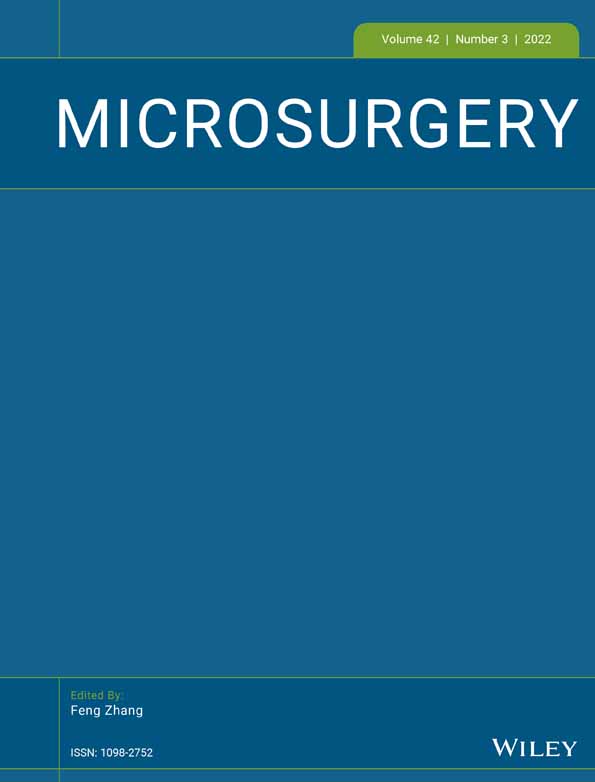Reconstruction of recalcitrant pressure ulcers with latissimus dorsi muscle-splitting free flaps
Lan Sook Chang and Kyu Tae Hwang contributed equally to this study.
Abstract
Background
Reconstruction of recalcitrant pressure ulcers is very challenging because all available local tissues have been exhausted. Although occasionally suggested as reconstructive options in some reports, free flaps are still not favored for pressure ulcers because of the less available recipient vessels in buttock area and the need for position change. Here, we describe our experience with latissimus dorsi muscle-splitting free flaps harvested in prone position for recalcitrant pressure ulcers.
Methods
Between January 2012 and January 2020, 10 patients of recalcitrant pressure ulcers underwent reconstruction using latissimus dorsi muscle-splitting free flaps. To harvest flaps in the prone position, the curvilinear incision was made along the line connecting the lateral border of the scapula and the midaxillary line of the armpit and the latissimus dorsi muscle was split just below the skin incision. Only the required amount of muscle was harvested including the 5 × 3 cm sized muscle cuff around bifurcation points of the transverse and descending branches.
Results
Flap size ranged from 16 × 9 to 24 × 14 cm and the gluteal vessels were mainly used as recipients. The mean operation time was 170 mins. All the flaps survived but two patients suffered wound disruption and partial flap loss, respectively. During the mean follow-up periods of 2.45 years, there were no recurrences at the reconstruction site, and no patient complained of donor site morbidity.
Conclusions
Based on the results obtained from this consecutive series of patients, latissimus dorsi muscle-splitting free flaps are valuable option for recalcitrant pressure ulcer reconstruction.
Open Research
DATA AVAILABILITY STATEMENT
The data that support the findings of this study are available from the corresponding author upon reasonable request.




